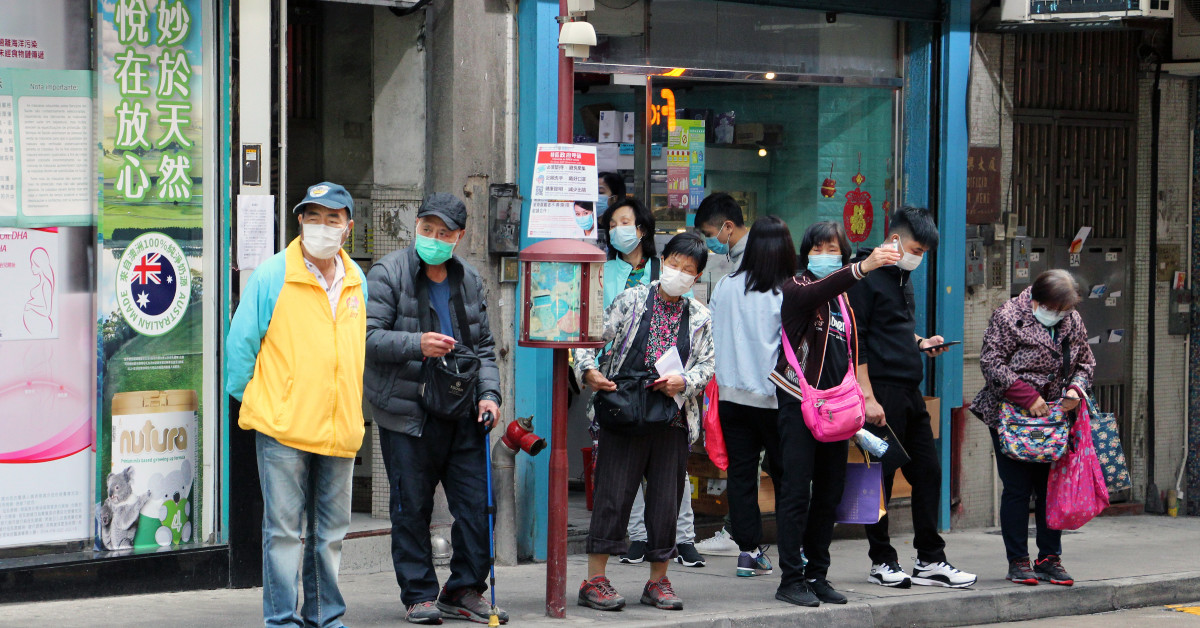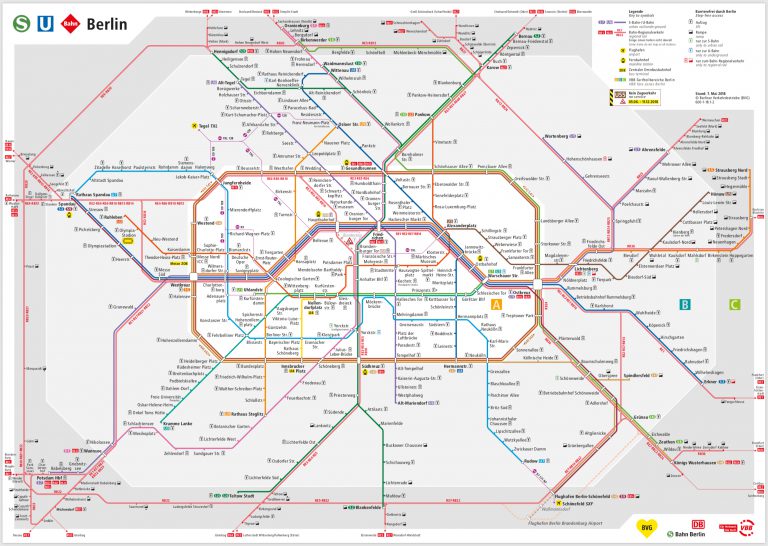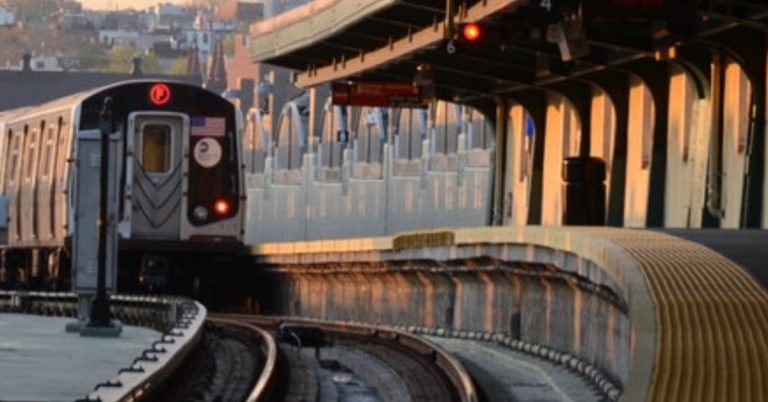Pandemic Best Practices For Transit
Pandemic Best Practices for Transit is an evolving playbook for the changing world of transit in the US and abroad, in memory of–and to honor the service of–my friend Ray Kenny and every other transit worker who has succumbed to COVID-19 while serving the public through transit.
COVID-19‘s disruption has dramatically increased our collective recognition of transit’s vital value to society. Transit providers have an unprecedented opportunity to steward these new circumstances into sustained investment as we adapt to a pandemic-prepared future.
Stewart Mader has identified three priorities for pandemic-era transit: protect, reassure, and adapt. Protect transit workers and the public, reassure riders with transparency and clear messaging, and adapt to new best practices instead of trying to return to a pre-pandemic way of life.
–CovidX: Reimagining how we get from point A to point B
“Terrific evidence-driven transit resource. Should be required reading for all transit authorities and agencies.”
–Executive Management Expert
🏥 Protect the public, and public servants.
Pittsburgh’s Port Authority of Allegheny County worked closely with the unions representing its workers to shift its schedule to best serve people with location-essential jobs, streamline leave, and strengthen protective barriers to maintain physical distance onboard buses. GO Transit and Pinellas Suncoast Transit Authority (PSTA) installed protective shields to keep drivers safe.
💺 Six feet of separation.
Ensuring everyone is able to stay six feet apart helps slow the spread of infection. Use floor decals to ensure safe distancing in stations. Houston Metro tagged seats as unavailable, and limited onboard occupancy to 50%. To ensure physical distancing, Chicago Transit Authority (CTA) permits bus drivers to run drop-off only service once a bus reaches maximum safe capacity.
😷 Make masks mandatory.
Each person who wears a mask limits their own risk of spreading infection, so more people wearing masks means mutual protection. Jeffrey Tumlin of San Francisco Municipal Transportation Agency (SFMTA) posted a lighthearted video in which he pulls a “magic act” with his pocket square.
🚌 Require rear-door boarding.
To limit customer contact with bus drivers, switch to rear-door boarding for all customers who do not require the ramp at the front door. Southeastern Pennsylvania Transportation Authority (SEPTA) created a bilingual graphic to reinforce rear-door boarding.
📲 Go contactless.
Promote trip planning, ticket purchases, and customer service using your app. Guide customers who rely on cash to use prepaid debit cards to purchase transit fares online and on your app. ZED Digital, a transit technology company in Columbus Ohio, developed a touchless fare validator that relies on near-field communication (NFC) to validate transit tickets without a customer having to take a phone out of a purse or pocket. “I would rather that my onboard crew are focused on safety and customer service and not on cash handling.” says Mike Noland, president and general manager of the South Shore Line connecting Northern Indiana and Chicago.
💉 Provide free rides for vaccines.
A free ride to get the COVID-19 vaccine. It’s a simple promise as powerful as the core purpose of transit. Providing access to the vaccine via public transit gives communities a fair shot at getting shots in arms. For transit agencies who have kept the world going by ferrying people before and during the pandemic, VaxTransit is a bridge to a brighter future after the pandemic.
🧽 Scrub and sanitize.
Washington Metropolitan Area Transit Authority (Metro) activated its pandemic plan and increased cleaning of vehicles, stations, and facilities before the region experienced its first COVID-19 case. Simultaneously encourage customers to increase personal hygiene, like washing hands for 20 seconds with soap and water.In What happens if someone who might have COVID-19 rides a bus? Portland Oregon’s TriMet provides a step-by-step walkthrough of their procedures, presented from the perspective of a bus driver, to protect employee health and well-being, and make transit vehicles safe to ride again.
🚈 Carry the community.
In France, SNCF used TGV high-speed trains to move patients to less hard-hit areas. RTC Washoe used vehicles to deliver meals and ensure food security for people in Reno, NV. In Florida’s most populous city, Jacksonville Transportation Authority provided complimentary transit rides to healthcare workers with ID and used autonomous vehicles to help transport medical supplies.
🗣 Be radically transparent.
Bay Area Rapid Transit (BART) shares daily ridership with customers to illustrate their decisions about service. Washington Metro updates a detailed COVID-19 timeline each time it takes a new step in its pandemic plan, and made a video asking customers to avoid visiting Washington, DC’s iconic cherry blossoms so that more people have a chance to enjoy them next year. While operators are out on medical leave, Jeffrey Tumlin of SFMTA said, “we put all our resources into the 20% of lines that serve 80% of rides.” The Port-Authority Trans-Hudson (PATH) subway in New York & New Jersey is posting photos from various stations in its system to reassure riders with visual evidence that they can maintain physical distance if they use transit.
💬 Watch your language.
Choose words that make your message clear, emphasize harm reduction, and help people see how their individual actions impact the community. Use “you should stay home instead of “people should stay home” when reminding customers to stay home to stop the spread. Physical distancing is immediately clear and requires no clarifying explanation, whereas social distancing requires explanation to clarify its meaning. Location-essential workers accurately describes the nature of certain jobs, unlike essential workers, which may provoke anxiety among those whose are protecting colleagues and customers by working remotely. New York’s Metropolitan Transportation Authority (MTA) told non-essential travelers, “Why are you even here reading this? Go home.”
📋 Educate customers on what to expect.
Washington Metro‘s gradual recovery plan promotes safety first while ramping up regional mobility. Utah Transit Authority (UTA) is sharing its service status using a risk scale ranging from high to new normal. Amtrak outlines changes to its policies so customers will know exactly what to expect when they return to ride a train. Explaining that face coverings are now required onboard trains, Amtrak includes information about permitted exceptions: “Facial coverings can be removed when customers are eating in designated areas, in their private rooms, or seated alone or with a travel companion in their own pair of seats. Small children who are not able to maintain a facial covering are exempt from this requirement.”
⏱ Resolve issues in real-time.
Relay customer reports about crowding to operations so they can resolve by opening more train cars or sending more buses. This will reassure riding customers when they see their issue resolved en route. Metropolitan Atlanta Rapid Transit Authority (MARTA) has buses on standby to prevent crowding, and a dedicated hotline customers can call to deploy an extra bus. Encourage your social media team to reply to customers with resolutions so they’re reassured about riding.
👏 Share gratitude.
VIA Rail, Canada’s national passenger railroad, is sounding train horns every day at 7PM/19:00hrs in tribute to critical health, front line, and essential workers. LA Metro, Metro Transit (Madison, WI), MTA, PSTA, and many other transit providers are thanking employees and essential workers for their commitment to their communities. To show appreciation to customers, the South Shore Line connecting Chicago and northern Indiana extended the validity of May monthly passes throughout June. India Birdsong, CEO and general manager of the Greater Cleveland Regional Transit Authority (RTA) shared her gratitude to Clevelanders, saying “This experience has made me appreciate this city for its strength, and that’s a lasting impression that will never fade.”
🌎 Prepare for dignified communication and continuity.
Review and reaffirm succession plans. Involve developing leaders in decision-making so they are prepared to seamlessly assume leadership responsibilities if someone is incapacitated. Ensure you are prepared to communicate the deaths of employees in a manner that dignifies their life and work. Each person has equal value, especially for those with whom they were near and dear.
💸 Streamline refunds.
Offer a standard amount to customers to ease the burden on your staff during a period of extraordinarily high volume, and build goodwill with customers who are facing stress and uncertainty in their lives. When New Hampshire-based Cooperative Alliance for Seacoast Transportation (COAST) announced that it temporarily suspended all service except for paratransit, it included the reassuring message that, “staff will work with customers individually to reimburse them for their monthly pass purchase.”
👥 Reduce Rush Crush.
Focus on running consistently paced service frequency throughout the day. This may come at the cost of running traditional morning and evening peak service, with the benefits of rebuilding trust in transit, enabling physical distancing when people ride, and offering more options to stagger work hours, or travel for meetings while primarily working from home. The switch to more evenly balanced service throughout the day may be welcomed by more customers who are actively avoiding the new health risks of the traditional “rush crush”.
🖥 Promote remote work.
Once-counterintuitive policies and practices are fast becoming commonplace to combat the pandemic. 30% of people may work from home more than one day a week, according to Kate Lister, president of Global Workplace Analytics. Promoting remote work can help transit agencies reduce wear and tear on infrastructure, better enable physical distancing, and gain firsthand understanding of new work practices by having every eligible employee work some days remotely as a regular practice. “Once they’ve done it, they’re going to want to continue,” Lister says, noting that employers who have had to work from home as a result of COVID-19 will themselves have firsthand experience and evidence that it can work for their employees.
🦺 We’re better apart.
For location-essential operations, build coequal teams that work in unison while maintaining physical distance. For example, have “red”, “white”, and “blue” teams that report to physically distinct rail or bus control centers, so an infection is less likely to jump from one team to another. In Maine, Casco Bay Lines structured its reduced ferry schedule to be operated by alternating crews, explaining, “A crew will work for a two-week period in an effort to preserve the availability of non-active crew members to sustain service should others test positive for COVID-19, thereby decreasing the likelihood of a suspension of all service.”
🧠 Maintain mental strength.
Support employees in making the transition to remote work, especially in circumstances where they are simultaneously balancing multiple responsibilities. Mass Transit magazine created a collection of transit themed activities to help homebound parents and kids. Strengthen employee assistance programs, and allow release time for off-site private counseling as people cope with the loss of colleagues. Destigmatize mental-strength counseling through your own words and actions as a leader. Google announced a company holiday to give employees a break and help prevent burnout after working from home.
⚖️ Emphasize equity.
The COVID-19 crisis presents an opportunity place equity at the forefront of planning the future of transit. Washington, DC Mayor Muriel Bowser is making transit a focus in her post-pandemic planning, with a committee on transit and infrastructure advising her District Economic Recovery Team. Mobility Lab’s Ethan Goffman says learning from transit’s role in recovery from the Great Recession can inform our approach to COVID-19 recovery, especially as COVID-19 exposes the racial and age inequality present in the frontline ranks of the transit workforce.
🏗 Accelerate capital projects.
This helps advance projects that would already require planned service suspension. BART reassigned operating staff to capital projects to reduce strain on its operating budget and accelerate system reinvestment work. LA Metro is sharing progress updates on projects like the Regional Connector and Purple Line Extension, and published a playlist of videos to give people a virtual tour of construction sites. The Northern New England Passenger Rail Authority expedited maintenance work on tracks used by the Amtrak Downeaster between Brunswick, ME and Boston, MA “to avoid construction-related service interruptions later.”
👩🏻💻 Move meetings online.
Tools like BlueJeans, GoToWebinar, or Zoom can enable you to continue to hold meetings that meet statutory requirements, advance projects that require public input and board approval, and maintain customer and employee loyalty. Washington Metro is holding frequent online forums in which key staff provide updates and respond to questions. Embracing public outreach via digital platforms and social media, because going beyond the traditional meeting can give you new insight from a more fully representative population of customers. Arizona DOT worked with local radio stations to broadcast public meetings, in addition to streaming them online. The radio broadcasts, along with a call-in number to record public comments, enable people to participate without requiring an internet connection.
🎛 Test new technology.
In New York, the MTA and Columbia University are testing the use of UV lamps to neutralize coronavirus in subway cars and buses while they are parked between service runs. Provide real-time information on how many customers are onboard a bus or train to reassure others waiting to board that they can maintain safe physical distance while in transit. A colleague leading future fare payment systems says of the pandemic’s impact, “It surely feels like digital transformation will be forefront on how we interact with our customers, run our day-to-day operations, and leverage technology to make our systems and platforms robust and resilient.”
🎙 Activate customers to advocate for investment.
Ask your customers to advocate for the investment necessary to adapt transit to meet their mobility needs, and protect them with physical distancing. Moving Maine, a video created by Maine DOT, makes a compelling case for transportation in just five minutes. Ask customers to contact their elected officials to advocate for transit relief funding and future investment. To make the case for more federal relief funding, MTA CEO Pat Foye and CFO Robert Foran explained why three traditional fiscal options are non-starters.
We’re required to balance our budget. Normally we’d have three options available to help do this: raising fares, cutting service, or deferring the bond-funded portion of our capital program. None of these are now tenable choices. With ridership so low, raising fares would accomplish nothing. Cutting service is another non-starter. We operate an essential service and have an obligation to keep the public and this region moving. Ensuring access to transportation is more vital now than ever. Regarding the third option, we’ve already put our capital program on pause until we have a path forward, and we’ll be using operating revenues previously committed to capital for liquidity during this crisis.
🗺 Prepare for new practices.
Don’t try to return to a pre-pandemic way-of-life. For the duration of the pandemic, MTA suspended service on New York’s iconic 24/7 Subway from 1-5 AM nightly for deep cleaning. MTA leaders held a press conference at 11PM the first night of the overnight closure, and invited the media to come see the overnight cleaning firsthand. Educate customers on what to expect when they return to transit. ATPCO, a nonprofit serving the airline industry, built a set of messages and graphics that focus on “how airlines are operating now, how they plan to in the future, and what they are doing to keep flyers safe.” Rhode Island Public Transit Authority (RIPTA) regularly updates an FAQ framed from the perspective of a customer. PSTA uses the tagline “be prepared not scared” in messages to customers.
- Amtrak: a model for essential transit during COVID-19 – Freedom of Transit
- Dogs could join the fight against COVID-19 – London School of Hygiene & Tropical Medicine
- Fixed to Flex: Essential Demand Response Services – Transloc
- Getting the Restart Right: How to Lead When Nobody Has a Map – Wall Street Journal
- How coronavirus could forever change the look and feel of Australia’s cities and suburbs – Australian Broadcasting Corporation
- How COVID-19 could remake transit and transportation networks – The Star
- Pittsburgh Port Authority: Adapting Quickly to COVID-19 With Good Communication Between Management and Labor – TransitCenter
- Planning Past the Pandemic – Community Transportation Association of America’s
- Post-pandemic, the risk to public transport is that it might never be the same – CityMetric
- Transit workers and riders: We want to hear from you – T4America
- What Amtrak service could look like once stay-at-home orders are lifted – WTOP
- Where Transit Goes, Communities Grow – The Key to Rebuilding Oklahoma’s Economy – Rep. Carol Bush
- Will the coronavirus kill the state’s transit comeback? – CT Mirror
📒 Rely on research to inform decisions.
- A Guide for Public Transportation Pandemic Planning and Response – Transportation Research Board
- COVID-19 News & Resources – Eno Transportation Center
- COVID 19 Operational Ideas You Can Use – South West Transit Association
- COVID-19 outbreak and implications to sustainable urban mobility – Transportation Urban Mobility Initiative
- COVID-19 Resources – APA
- COVID-19 Resources – CUTA-ACTU
- COVID-19 Stats Tracker – Transit App
- Emergency Management Forum – Texas A&M Engineering Extension (TEEX)
- Epidemics & Pandemics – National Transit Safety Research & Assistance Center
- FAQ from FTA Grantees Regarding Coronavirus – Federal Transit Administration
- Infectious Disease Prevention; Exposure Control Plan; Major Incident Notification Process – Washington Metro
- Management of COVID-19: Guidelines for Public Transport Operators – UITP
- Mobility Trends Reports – Apple
- Pandemic Flu Response Plan – King County Metro
- Rapid Response: Tools for Cities – NACTO
- The COVID-19 Pandemic: Public Transportation Responds: Safeguarding Riders and Employees – APTA
- The Intersection of COVID-19 and Transportation – Follow the Data Podcast, Bloomberg Philanthropies
- What Transit Maintenance Workers Need to Know About COVID-19 – CDC
- Transportation & Development Policy (ITDP) offers several resources, including a guide for micromobility and The Grow Cycling Toolkit.
What is your opinion of rear-door boarding on buses?
Posted by Subway NY NJ on Thursday, July 30, 2020





